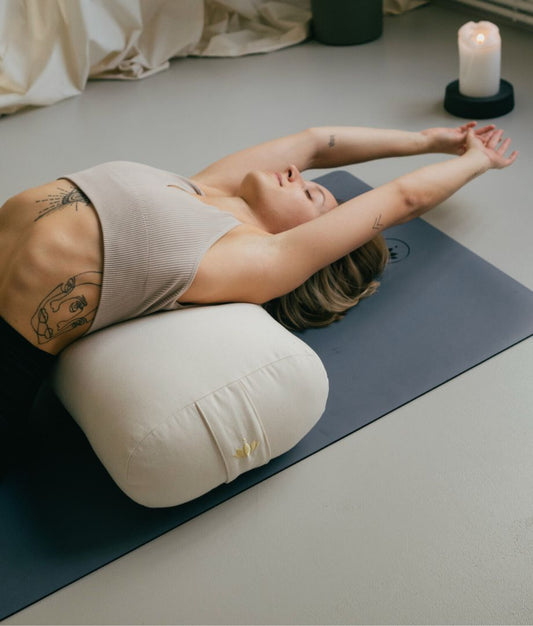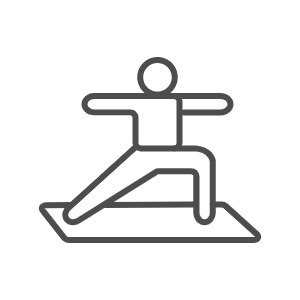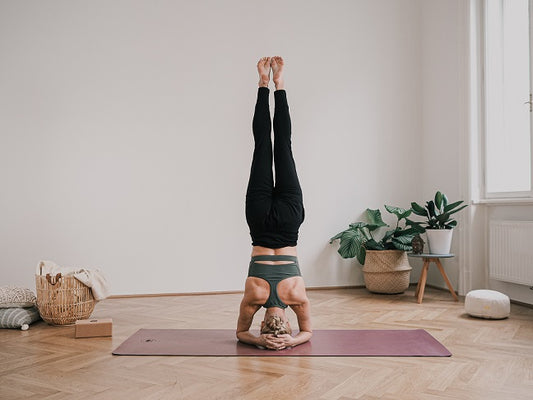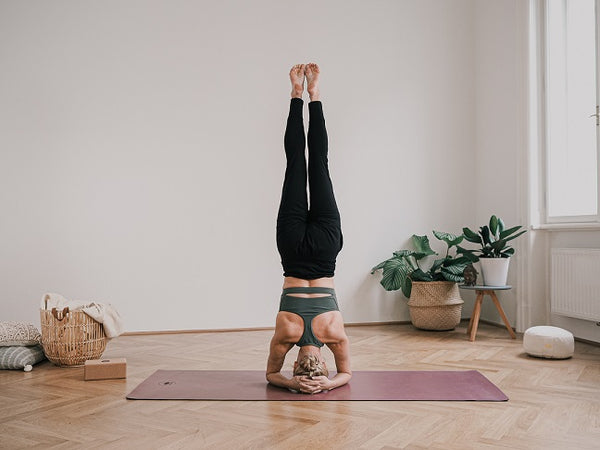
Set-Offers
Save when you buy a set
Shopping cart
Your shopping basket is empty
Yoga

Meditation
Bundles

| Wissen & Wirkung
Today we would like to introduce you to a new asana - but not just any, but the so-called king of asanas: Right, today it's about the headstand. In some yoga traditions, the headstand is part of the basic row. Beginners fear it as much as it admires it. After all, a mistake in execution can certainly go wrong when there is so much weight on the cervical spine... right?
We clarify! :)

The headstand is definitely a challenging posture and should not be tried out on your own and without preparation, especially as a beginner.
In principle, however, almost anyone can learn and practice the headstand, apart from a few contraindications. It is important that the asana is performed correctly and that enough strength is built up in the shoulders and arms beforehand so that the cervical spine is not strained.
As already mentioned, there are also a few contraindications for the headstand. Under these circumstances you should avoid the headstand:
If you are unsure, we strongly recommend talking to a doctor - in this case, it's better to be safe than sorry!
With so many contraindications and prohibitions, the question quickly arises as to whether it would be better not to do headstands at all. Here we can reassure you: In fact, there are a lot of positive effects on the body, but also on an energetic and mental level.
Sirsasana promotes…
Aside from the physical effects, the headstand also gives us
In fact, the headstand has been used to heal and prevent nervous disorders. It has been proven that the yoga position is good for the brain and promotes the networking of different nerve cells.
We are often asked whether the headstand is dangerous because the blood flows into the head and accumulates there. But here, too, we can reassure you: This is just a myth that stubbornly persists.
As already mentioned, a certain tension and strength in the upper part of the body is particularly important, which is why we would like to share a few preliminary exercises with you before we start the real headstand.
To build up the necessary strength, the following are suitable, for example:
Are you brave and have you built up the necessary strength in your arms and core? Then it can go!
Done - you are now in a headstand. :)
To keep your balance, it's best to concentrate on a stationary point and keep the tension in the middle of the body. It is also important that you only stay in the position for as long as you feel comfortable - a few seconds are enough at the beginning.
If it doesn't work perfectly the first time, the following applies, as always with yoga: just don't lose patience. Go at your own pace, don't compare yourself to others and most of all have fun.
All the best!

In addition to the well-known meditation on the breath, many other forms of meditation are known today. Some of these were only developed in moder...
Continue reading
We celebrate 10 years of Lotuscrafts We would like to take this as an opportunity not to provide you with topics related to meditation, yoga and ...
Continue reading
There are no comments yet. Be the first to leave a comment!